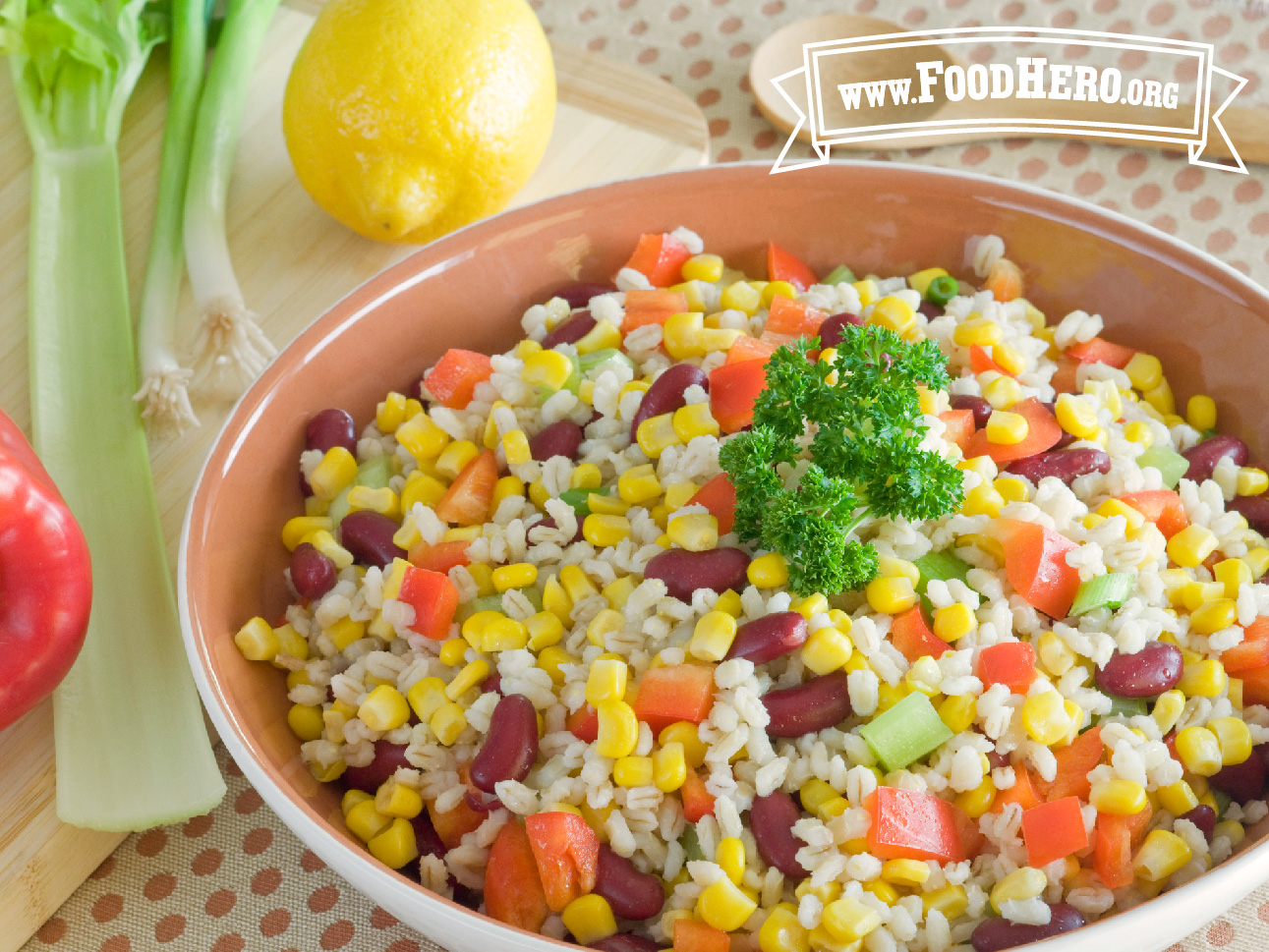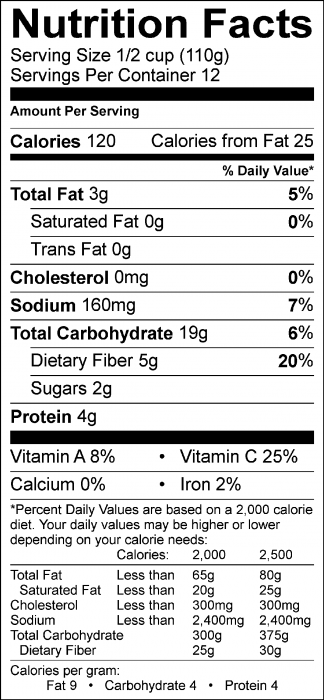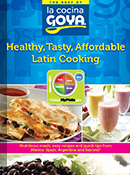Barley, Bean and Corn Salad
Leer en Español

Prep time:
15 minutes

Cook time:
45 minutes

Servings:
6 cups
Quick Tips
Save for later: Freeze extra lime or lemon juice to use later.
Place any extra cooked barley in an airtight container and refrigerate for up to a week or freeze. Add cooked barley to soups, stews, casseroles and salads for a healthful fiber boost.
Cook your own dry beans. One can (15 ounces) is about 1 1/2 to 1 3/4 cups drained beans.
Barley, Bean and Corn Salad
Leer en Español
Ingredients:
- 2 cups cooked barley (cooking directions below)
- 1 can (15 ounces) kidney beans, drained
- 1 cup corn (canned and drained, frozen, or fresh cooked. One large ear of corn makes about 1 cup of cut corn.)
- 1 large red bell pepper, seeded and finely chopped
- 1/2 cup sliced celery
- 1/4 cup sliced green onion
- 1 clove garlic, finely chopped or 1/4 teaspoon garlic powder
- 1/4 cup fresh lemon or lime juice
- 2 tablespoons oil
- Salt and pepper to taste
- Fresh cilantro or parsley sprigs, for garnish (optional)
Directions:
1. In medium saucepan with lid, bring 3 cups water to a boil.
2. Add 1 cup barley and return to boil. Reduce heat to low, cover, and cook 45 – 60 minutes or until barley is tender and liquid is absorbed.
3. Separate 2 cups and set any extra cooked barley apart.
4. Mix barley with remaining ingredients, except garnish, in a large bowl.
5. Cover and chill several hours or overnight to allow flavors to blend.
6. Garnish with cilantro or parsley sprigs, if desired, and serve.
Refrigerate leftovers within 2 hours.
Quick Tips
Save for later: Freeze extra lime or lemon juice to use later.
Place any extra cooked barley in an airtight container and refrigerate for up to a week or freeze. Add cooked barley to soups, stews, casseroles and salads for a healthful fiber boost.
Cook your own dry beans. One can (15 ounces) is about 1 1/2 to 1 3/4 cups drained beans.

Prep time:
15 minutes

Cook time:
45 minutes

Servings:
6 cups


Purdue University is an equal access/equal opportunity institution. This material was partially funded by USDA's Supplemental Nutrition Assistance Program - (SNAP) and USDA's Expanded Food and Nutrition Education Program - (EFNEP).







